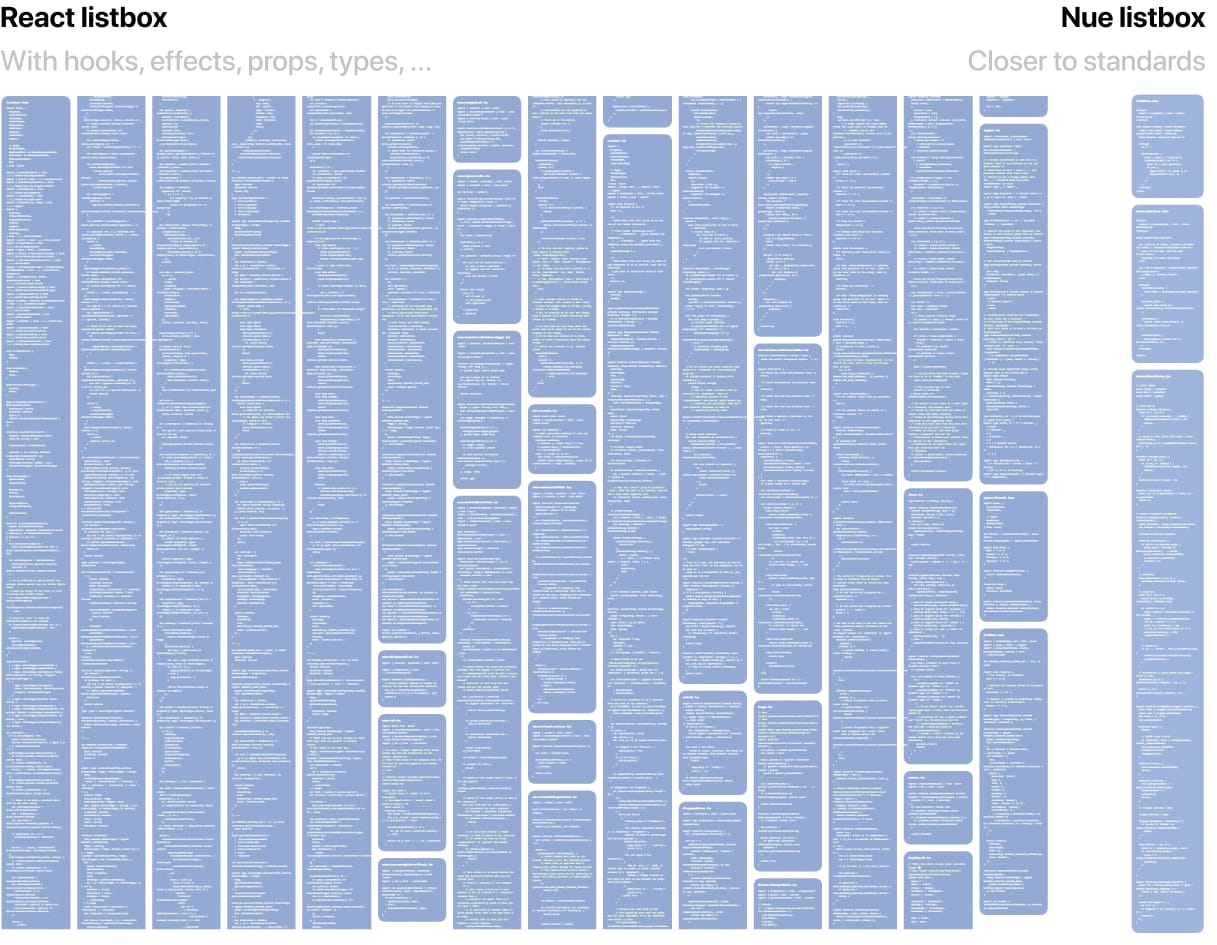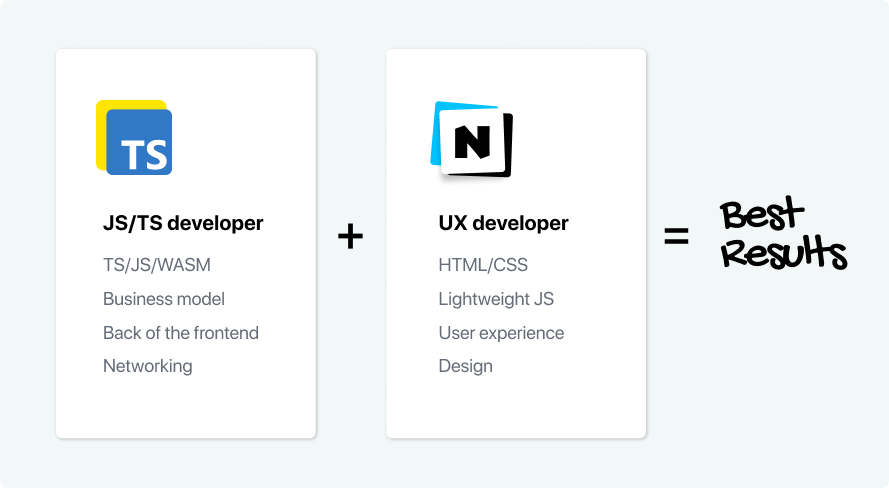Nue JS • Introduction
Nue JS is an extremely small (2.3kb minzipped) JavaScript library for building user interfaces. It is the core of Nue toolset. It’s like Vue.js, React.js, or Svelte but there are no hooks, effects, props, portals, watchers, injects, suspensions, or other unusual abstractions on your way. Learn the basics of HTML, CSS, and JavaScript and you are good to go.
Build user interfaces with less code
The biggest benefit with Nue is that you need less code to do the same thing. It’s not unusual to see 2-10x differences in the amount of code you need to write. For example, here’s a custom list box component written with Nue:
The React version is 2500 lines of JavaScript. Nue version is about ten times smaller even with 50-80% of the features:

“It’s just HTML”
Nue uses HTML-based template syntax:
<div class="{ type }">
<img src="{ img }">
<aside>
<h3>{ title }</h3>
<p :if="desc">{ desc }</p>
<slot/>
</aside>
</div>
While React claims to be “Just JavaScript”, then Nue can be thought of as “Just HTML”, which is perfect for UX developers who focus on interaction design, accessibility, and user experience.
Compare Nue coding style with React, Vue, Svelte, Tailwind, and Astro.
Built to scale
Three reasons why Nue brings new levels of scalability to frontend development:
Separation of concerns, easy-to-read code is easier to scale than “spaghetti code”.
Minimalism, a hundred lines of code is easier to scale than a thousand lines of code
Separation of talent, When UX developers focus on the front of the frontend and JS/TS developers focus on the back of the frontend your team skills are optimally aligned:

Decoupled styling
Nue does not promote the use of scoped CSS, Tailwind, or other CSS-in-JS framework because of tight coupling. It’s better to separate your style from the layout and structure, because:
More reusable code: When styling is not hardcoded to the component, the same component can look different depending on the page or context.
No spaghetti code: Pure HTML or pure CSS is easier to read than mixed spaghetti code
Faster page loads: With decoupled styling it’s easier to extract primary CSS from the secondary and keep your HTML page under the critical 14kb limit.
Learn more about styling components
Four kinds of components
Nue has a rich component model and it allows you to create all kinds of applications using different kinds of components:

Server components are rendered on the server. They help you build content-focused websites that load faster without JavaScript and are crawlable by search engines.
Reactive components are rendered on the client. They help you build dynamic islands or single-page applications.
Hybrid components are partly rendered on the server side, and partly on the client side. These components help you build reactive, SEO-friendly components like video tags or image galleries.
Universal components are used identically on both server- and client side.
UI library files
Nue allows you to define multiple components on a single file. This is a great way to group related components together and simplify dependency management.
<!-- shared variables and methods -->
<script>
import { someMethod } from './util.js'
</script>
<!-- first component -->
<article @name="todo">
...
</article>
<!-- second component -->
<div @name="todo-item">
...
</div>
<!-- third component -->
<time @name="cute-date">
...
</time>
With library files, your filesystem hierarchy looks cleaner and you need less boilerplate code to tie connected pieces together. They help in packaging libraries for other developers.
Simpler tooling
Nue JS comes with a simple render function for server-side rendering and a compile function to generate components for the browser. You don’t need massive bundlers like Webpack or Vite to take control of your development environment. Just import Nue to your project and you are good to go.
NOTE Bundler makes sense on the business model layer if you have hundreds or thousands of NPM- dependencies. Bun and esbuild are great and highly performant options.
Use cases
Nue JS is a versatile tool that supports both server- and client-side rendering and helps you build both content-focused websites and reactive single-page applications.
UI library development Create reusable components for reactive frontends or server-generated content.
Progressive enhancement Nue JS is a perfect micro library to enhance your content-focused website with dynamic components or “islands”
Static website generators Just import it into your project and you are ready to render. No bundlers are needed.
Single-page applications Build simpler and more scalable apps together with upcoming Nue MVC
Templating Nue is a generic tool to generate your websites and HTML emails.
